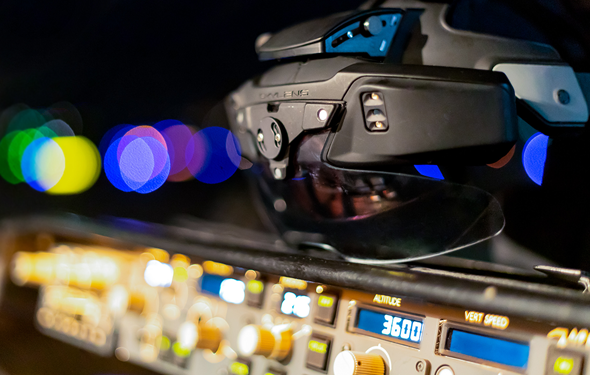The fight against wildfires is a relentless one, demanding courage, skill, and cutting-edge technology. Among the crucial players in this battle are aerial firefighters, who navigate treacherous landscapes shrouded in smoke, ash and congested airspace. Poor visibility presents a constant challenge, jeopardizing the safety of pilots, crews, and ground personnel. But a ray of hope emerges with the advancements in Enhanced Flight Vision Systems (EFVS), offering a potential game-changer in aerial firefighting.
Imagine piloting a fixed-wing aircraft or helicopter amidst a raging inferno, with swirling smoke reducing visibility to mere meters. This is the harsh reality aerial firefighters face. Smoke plumes can create near-zero visibility conditions, hindering crucial maneuvers in all mission sets to include Air Attack, Lead Plane, Scoopers, dispersant drops, , and crew rescue. These limitations not only endanger lives but also hamper firefighting effectiveness, allowing blazes to spread unchecked.
Enhanced vision systems like the Universal Avionics EVS-4000 act as a digital eye, piercing through the smoke curtain to present pilots with a clearer picture of the environment. These systems integrate diverse sensors like thermal cameras and infrared imaging to create a real-time, enhanced view of the terrain and obstacles. When coupled with Head-Wearable Displays (HWDs), like the Universal Avionics SkyLens, pilots enter an augmented reality landscape enabling them to navigate the mission more effectively. Imagine seeing the runway through dense smoke or identifying hot spots hidden within the blaze – that’s the power of EFVS.
Enhanced Safety: Improved visibility and head-up flying translates to safer operations, reducing the risk of mid-air collisions and accidents due to spatial disorientation and obscured hazards. Increased Effectiveness: Pilots can target dispersant drops with greater precision, thereby maximizing firefighting impact.Expanded Operational Window: EFVS with HWDs allow flights in low-visibility conditions that would otherwise be grounded, maximizing response times and firefighting hours.
Improved Crew Coordination: Enhanced situational awareness and heads-up flying facilitates better Crew Resource Management (CRM). This has a positive effect on managing tasks and decision making, leading to safer and more efficient firefighting tactics. Airspace Situational Awareness (SA): The combination of EVS, SVS, TCAS I/II and in the future ADS-B IN, provide an unparalleled capability to deconflict airspace while keeping your eyes “outside the cockpit”. This homogenization of SA tools brings a Distributed Aperture System (DAS) capability to AFF aircraft.
Cost and complexity: Equipping aircraft with EFVS requires investment and training for pilots. A fixed heads-up display can be limiting for operators and take up valuable cockpit space. Opting for a wearable HUD provides pilots with a wider field of range and is more intuitive for users. Regulations and approvals: Integrating EFVS into existing regulations and obtaining operational approvals can be a lengthy process. As a first-to-market technology, the certification of Universal’s ClearVision EFVS is a groundbreaking development advancing these capabilities for special missions and aerial firefighting.
The potential of EFVS for improving aerial firefighting safety and effectiveness is undeniable. Continued investment in research, development, and regulatory streamlining is unleashing its full potential. As technology evolves, EFVS has the potential to become an indispensable tool, allowing aerial firefighters to see through the smoke and win the battle against wildfires, one mission at a time.
ClearVision/SkyLens are fielded in both Forward Fit and Retrofit applications. With two retrofit STC’s in place (B200 pending) end-users and the FAA are becoming more educated and comfortable with this technology.
By leveraging the power of EFVS with wearable Head-Up displays, we can rewrite the narrative of aerial firefighting, from battling blindfolded to seeing clearly, and ultimately, saving lives and landscapes from the flames.






